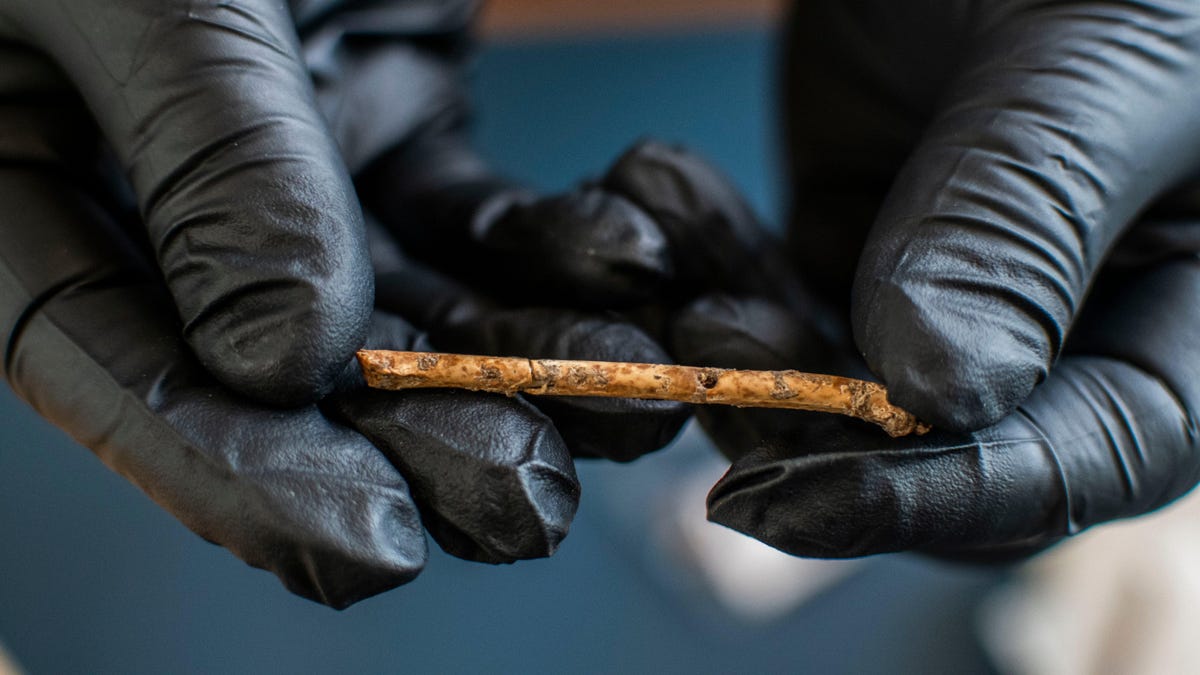
[adinserter block=”8″]
12,000-year-old bird bones found in the far north of Israel may have been used as instruments by prehistoric humans to lure more birds to their death, according to a team of archaeologists that studied the artifacts.
The perforated bones were found in Israel’s Hula Valley, just west of the Golan Heights, which Israel seized from Syria in 1967. The bones were first excavated in 1955 but were recently reexamined.
Seven wing bones from the site belonged to coots and teals. Upon recent inspection, a team of archaeologists found that marks on the bones were actually minuscule holes bored into their sides.
The team posits that the bones were used as flutes (aerophones, to use scientific language) to mimic the calls of birds of prey. These calls would frighten the migratory birds into taking wing, making them easier targets for Natufian hunters, the scientists speculate. The team’s analysis of the bones was published today in Scientific Reports.
“If the flutes were used for hunting, then this is the earliest evidence of the use of sound in hunting,” said Hamudi Khalaily, an archaeologist at the Israel Antiquities Authority and co-author of the paper, in a Hebrew University of Jerusalem release.
“This discovery provides important new information on hunting methods and supplements the various prehistorical tools that mark the start of the transition from agriculture and the cultivation of plants and animals in the southern Levant,” Khalaily added.
To test their hypothesis, the team engaged in some experimental archaeology, creating replica flutes using mallard bones, which were fashioned to match the size of the bone flutes and the bored holes. (Only one of the found flutes was intact.) Blowing through the replica bones, the team found that several high-pitched frequencies could be hit that could mimic the calls of two birds of prey that were known to inhabit the Neolithic Levant: the Common kestrel (Falco tinnunculus) and the sparrowhawk (Accipiter nisus).
The team acknowledged that there’s no guarantee that the perforated bones were necessarily blown, much less tools for hunting: “From the archaeological perspective, one fundamental problem is distinguishing between an artifact’s potential to produce sound and the confirmation that this artifact served that specific purpose,” they wrote.
And even if the bones were fashioned with sonorous intent—that is, they were made to make sound—there’s no guarantee that they were used in hunting. Perhaps they were some of the earliest musical instruments, for which archaeological evidence is often scant.
“The current research shows just how important it is to preserve the cultural finds uncovered during excavations, which continue to yield new insights and research directions into human culture, thanks to new methods and to collaboration among scholars in different disciplines,” said study co-author Rivka Rabinovich, an archaeologist at the Hebrew University of Jerusalem, in the same release.
Indeed, ancient evidence is only as useful as modern technologies. It’s the same reason NASA has held onto samples of the Moon collected during the Apollo missions; scientific samples can only appreciate in value (unless they’re in a state of rapid degradation).
In time, more found artifacts may show what ancient sound-making tools look like in archaeological contexts. Or our methods for probing such artifacts will get better. Ideally, the two will work in concert to give us more than a glimpse of our sonorous past.
More: What Was the Earliest Music?
[adinserter block=”8″]
Credit : Source Post






